John Janaro's Blog, page 58
March 14, 2023
We Are Called to Live as Persons-in-Communion
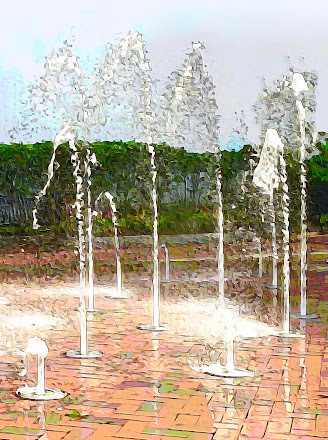 Humans are both individual and social by nature. And according to the plan of God in Christ we are called to live a great and mysterious reality, to discover the fullness of life in an interpersonal community.But building genuine interpersonal community is a seemingly impossible task. We seem always to be caught in a violent tension that pits personal freedom against collective security and affirmation.
Humans are both individual and social by nature. And according to the plan of God in Christ we are called to live a great and mysterious reality, to discover the fullness of life in an interpersonal community.But building genuine interpersonal community is a seemingly impossible task. We seem always to be caught in a violent tension that pits personal freedom against collective security and affirmation.Though some persons of unusual strength and pride attempt to affirm an absolute individualism, most of us are too vulnerable and too drawn to one another to be tempted directly by radical autonomy.
We recognize our value as persons, and also our orientation as persons toward relationship, to be-with-one-another, to live in community. We are born into families that are woven together through larger groups devoted to various purposes, and we also build up social groups through our own commitments.
Yet "groups" have their own cumulative momentum, their own gravitational pull, their powerful tendency to generate uniformity. People can surrender their own creativity and sense of identity to the "group mentality," and become increasingly determined in thought and action by those who possess the most power. Or they may become afraid of "losing themselves" to the perceived power of the group, and draw back from sharing life, distance themselves in some measure, and fall into a passive (and lonely) indifference.
The only energy that can transcend this dialectic is love — the love that corresponds to the dignity of the human person, the mystery of the person, the gift of the person.
“Group dynamics” in and of themselves inevitably end in factionalism and exclusion. Moreover, recent history should have taught us by now that true community can never be generated by violence, whether it be the external violence of barbed wire and iron bars or the internal violence of imposed ideology, “re-education,” propaganda, or psychological manipulation. These kinds of violence can make a “group” with a common surface mentality of ideological conformity, but they violate the freedom of persons and alienate them from themselves and one another. Often, the subconscious frustration that slowly burns beneath the surface of ideological conformism breeds resentment, which eventually breaks out into counter-violence against self and others.
In today’s world—with the immense capacities of multimedia for shaping personal perceptions and “environments” of social presuppositions—we should be especially attentive to the use (and the potential misuse) of “soft power.” The cumulative impact of the manipulative configuration of perceptions under the pretext of providing “information” breeds a depersonalized conformism. It disconnects persons, leading them to interior withdrawal, passivity, and boredom. Or it engenders suppressed frustration and anger that become tinder for the irrational and counter-violent flames of reactionary upheavals. The sudden rise of factions bonded together by common grievances and resentment should not surprise us. The cycle of violence can take many forms. It is always the enemy of community.
Genuine community is the fruit of freedom and love.
And we are confident that love can prevail, because we know that we are sustained in being and called as persons-in-relationship, in community, by the One who is Love. The One who is Love and Communion is the source and fulfillment of everything.
Therefore, any "group" that is truly human is made up of persons who, in the original and radical sense, have been given to us by the mysterious design of Eternal Love, and to whom we have been given in turn, to love and be loved. And a group can only be truly human if it lives as a communion of persons, which means that it must respect and cherish every person within its sphere of vitality, because every person is made in the image of the One who is Love.
Each and every person in a group has a unique and unrepeatable value, and this must never be reduced to their productive contribution to building up the group and furthering its ends. This is true even (especially!) when a group is united in the pursuit of social, moral, or religious concerns. We must never forget this!
Each person is worthy of love for their own sake, above and beyond what they may or may not "do" for the group.
Even when a group is so large that we cannot know every individual person, we must always remember the dignity of every person. We can at least hold that love for every person in our hearts. We must cultivate the readiness of solidarity, the openness that welcomes the stranger and that lives human existence as a great companionship.
March 13, 2023
Gratitude For Pope Francis’s Ten Years of Service
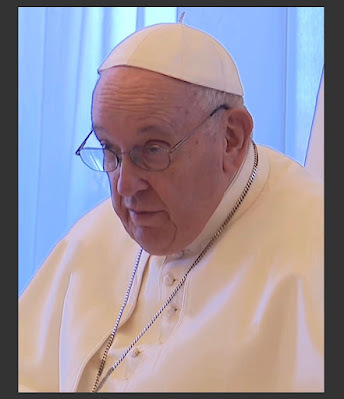 Dear Pope Francis,
Dear Pope Francis,Thank you for ten years of fidelity to the office to which God has called you—to be Bishop of Rome, Successor of Saint Peter, Servant of the Servants of God, and a shepherd and father to us all.
You have reminded us every day of the loving presence of Jesus in our lives, and challenged us to share the joy of the Gospel with the whole world, to live with responsibility and gratitude for the beauty and value of all of God’s creation, and to cherish and support the irreplaceable, lifelong mutual love of husbands and wives as the essential foundation of family life. You have encouraged young people and—by word and example—taught us how to embrace growing old, and the mysterious value of the sufferings that we are called to endure. You have emphasized the special human gift of dialogue and mutual enrichment in the relationship of grandparents and grandchildren, of the elderly with the younger generations. This interaction is an important part of God’s providence: in this way life and history are informed by the union of wisdom and innocence, by experience of the past and hope for the future.
You have always emphasized the special love of Jesus for the poor, the forgotten, the marginalized. Attention to their material needs (including their very real need for justice, mercy, and equity) is not motivated by utopian schemes but by fidelity to Jesus who calls us to recognize him and serve him concretely in the poor: “I was hungry and you gave me food… I was sick and you cared for me, in prison and you visited me… I was a stranger and you welcomed me.” You have exhorted us to work in the ways we can to build a more just, loving, fraternal society—to foster the “revolution of tenderness” that Jesus is working even in the midst of this temporal world, as the glowing light of his glory on the horizon of earthly life that has already begun to illuminate everything, as the foretaste of eternal life that sustains us on our historical journey with the promise of fulfillment. It is worthwhile, therefore, to glorify God through works of mercy, and even to work for the “civilization of love” (Saint Paul VI), the social vitality of Christ’s saving love that “already”—even NOW—embraces the whole human person and every aspect of human life.
We are called to adore, worship, and live in gratitude and joy as children of God our Father, and to serve Jesus our brother in one another and especially in the poor, the abandoned, the lonely—because it is particularly through them that Jesus cries out to us and yearns for our love. God loves everyone, which means that his Catholic Christian disciples cannot rest in any form of self-satisfaction, but must always seek the face of Christ who has united himself to the fulfillment—the destiny—of every person.
In these ten years this has been the wisdom—the heart and soul—of your Petrine ministry. What you have proposed to us is often difficult, but it is the way of the Gospel, the truth we need to hear, the guidance and correction of a merciful father who is called to help us mature in Christ. It requires us to face our own weakness and incoherence, which humbles us. But it is good for us to be humble. Your Papacy remains an ongoing work of Christian love and service for which I am truly grateful.
Thank you, Pope Francis, for being a “father” to me in Christ in this past decade. You have consoled me, instructed me, provoked me to look more deeply at things I thought I already knew, helped me to be patient while living in the midst of an often-confusing and sometimes-terrifying society—to listen to the Holy Spirit and follow Jesus, to resist temptations to resentment, wounded vanity, grudges, gossip, or forgetting Christ’s lordship over history and trusting instead worldly ideologies that promise easy security (and revenge) if I am willing to sell my soul.
I am so grateful for your paternal solicitude by word and example that has been a light for me during a decade filled with pain in my own life, unstable health, much sorrow and grief, so many changes in the passage of time, and—of course—many joys too. Through your ministry you have accompanied me and encouraged me. Meanwhile, as you continue to bear the enormous sufferings that weigh upon individuals and peoples in the Church and in the world, I will continue to pray for you.
Your devoted son—and brother—in Christ and his Church,
~John Janaro
March 12, 2023
As Christina Grimmie Turns 29, She Helps Us Grow Stronger
 Today is Christina Grimmie’s 29th birthday. It is hard not to imagine what her voice would have been like at this age—what further depth, richness, and versatility she might have acquired in her singing, songwriting, and instrumental virtuosity.
Today is Christina Grimmie’s 29th birthday. It is hard not to imagine what her voice would have been like at this age—what further depth, richness, and versatility she might have acquired in her singing, songwriting, and instrumental virtuosity.Things turned out differently, of course.
Instead, she fulfilled her whole vocation in this world in a very brief period of time, but with extraordinary magnanimity and lucidity, inspired by her beautiful, ardent faith. Many of her frands who were teens or pre-teens when they first encountered Christina have since grown to adulthood. Yet she is not just a distant memory for them; she continues to inspire their lives today (as she does also for people of all ages, all over the world). Christina was a young woman with an enormous heart, who was drawn so powerfully by Jesus Christ that she seemed to want to embrace the whole world. She had a joy that poured itself out in music and in a tireless enterprise of connecting with people by all the means she could find.
She had a remarkable human strength and a particular gift for communication, and for encouraging others—especially those who were broken, damaged, lonely, or in great need. She also knew that she belonged to Jesus, and that all the value of her strength and talent came from Him. Christina was a very down-to-earth person too; she was a girl and a young woman who was just normal and relatable to her peers, who didn’t put on airs, who—apart from her amazing musical talent—seemed like an “ordinary person.” And yet she was different. She was very much an "earthen vessel" that nevertheless carried the treasure of Christ's love in a manner that communicated something of that love's heroic stature.
Christina knew that His love could sustain the human heart, and thereby foster healing and bring consolation and strength to those who struggled to discover their own self-worth. In April of 2014 she made a very short, spontaneous video that took its point of departure from eating disorders and self-harm issues but opened up from there. Anyone could articulate these kinds of statements on a video, of course, but what she expresses here has a palpable authenticity because it comes from within the context of her whole life as a daily risk, a radical availability to the people she met, a passion for Christ and her music and the people to whom she gave the gift of her music.
In this meme I designed from the video, the first panel summarizes a slightly longer discourse, but the other two panels are her exact words that she felt were so urgent, so significant for affirming the value of all the people who were touched by her music, and indeed of every human person who might watch it. I think the video is still accessible on YouTube. In any case, here is my graphic summary. I'm very struck by what she says.

Christina never tried to sell her faith. When she did mention Jesus, it was to affirm a conviction that couldn't be expressed without an explicit reference to Him. Her own love, in its source and its urgency, its value and its significance as a gift to others, was inseparable from His love.
It requires a certain kind of audacity to tell people to love themselves and recognize the beauty in themselves 'because Jesus loves you... and I love you.'
It requires a certain kind of audacity to express and give ourselves in a way that says to our family, to our neighbors, to everyone we meet, that it is worth it to keep living 'because I love you.' This is the kind of love that is not afraid to open its arms to anyone, that is not afraid to open its arms because it always has confidence in the One whom it seeks to embrace. Such confidence engenders a real courage, a real audacity that is more powerful than all the harm that human beings can inflict upon others and themselves, more powerful than the violence that tries so terribly to negate it, but that cannot prevail in the end.
The world needs this kind of audacity. The world needs this kind of love.
Thank you, Christina, for your courage, for your legacy that is helping us to grow stronger. Happy Birthday!💚🎶
March 11, 2023
“Springing Forward”
“Springing Forward (Morning on the River).” March 2023.
As usual, I crafted this artwork “digitally” at JJStudios (aka my iPad), with some drawing tools (on touchscreen) and some filters, adjustments, application of effects. It probably takes less time than painting (and definitely requires less space and external materials). But it is an “original work of art” that absorbed lots of time, attention, energy, and creativity.
Someday, I might look into offering “prints” of these for sale, if there is interest.

March 9, 2023
When (and Why) Did “The United Nations” Begin?
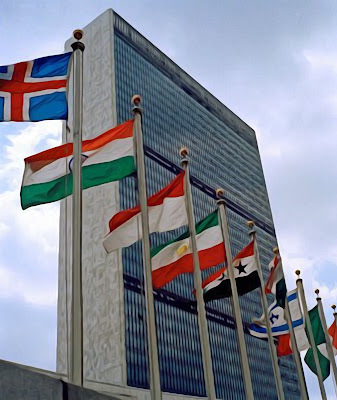 Twentieth Century global conflicts set the stage for the world we live in today, and the problems we face.
Twentieth Century global conflicts set the stage for the world we live in today, and the problems we face.In the latter part of World War II, the nations around the world (and their soon-to-be-independent colonies) who were united in the fight against Hitler and militant Japan began to refer to their global alliance as “the United Nations.” The leading allies were Great Britain, the (eventually-fully-restored) "Free French," the United States of America, China (under the decidedly anti-Communist Chiang Kai-Shek), and the Soviet Union. The War was so desperate that few considered the implications of the fact that the Soviet Union was still held ideological prisoner by the Bolshevik Communist revolution, which at that time meant that it was also the personal fiefdom of the murderous, genocidal Joseph Stalin (who was presented in affectionate terms as "Uncle Joe" during the war).
It was American President Franklin Delano Roosevelt who envisioned this vast and unprecedented alliance continuing after the war and opening itself up to all the nations of the world, as a institution to preserve peace, to moderate disputes, to collaborate in global activities to the benefit of all, and to deliberate about what was necessary for the security of nations and peoples. Thus, The United Nations as we know it today emerged from World War II.
Nearly 80 years later, it can be said that the U.N. has accomplished some good things, but overall the work of the U.N. has been quite a mixed bag, for many reasons. In particular, there is one structural problem that hobbles the U.N. to this day, and that is the nature and structure of the Security Council. In retrospect, it’s almost incredible to look back at the naive idealism of so many Westerners as the wars with Germany and Japan drew to a close in 1945.
The plan was that the “Big Five” allies in the wars would form the basis of the Security Council that would keep the peace, rein in offending nations, and authorize U.N. sponsored military interventions by member states if necessary. Other nations would also serve limited terms as Security Council members on a rotating basis. But the USA, Britain, France, China, and the Soviet Union would be permanent members, and each would have veto power over any proposal made (even if everyone else on the Security Council favored it). When the U.N. Charter was drawn up in 1945, it appeared to be a peacetime continuation of the unity of the Powers that were working together on three fronts to win “the Good War” against the destructive Germans and Japanese.
In fact, reality was a lot more complicated. Roosevelt’s ill-considered demand for “unconditional surrender” compelled the Allies to conquer completely the offending nations, thus deflating the possibility of working with any internal resistance within Germany or Japan. It may be that there were no viable alternatives in the case of Nazi Germany. It’s still difficult to penetrate the internal politics of Imperial Japan at that strange time, except to say that there were diverse opinions, but these became irrelevant in the face of the prospect of total conquest and foreign occupation.
Granted, the militarist Japanese were unscrupulous aggressors who perpetrated war crimes, and their decisive and permanent defeat was necessary. How else could it have been accomplished? There was never an opportunity to explore options other than conquering the entire island nation. The project was so daunting that the Allies saw no hope other than to unleash the dogs of war on a scale never before seen in history. But indiscriminate aerial terror bombing of entire civilian populations, even when considered in this desperate context, cannot be justified. And the atomic bombings of Hiroshima and Nagasaki recklessly ushered in the era of nuclear war.
As I have said before, the USA is a good country. But when its political or military interests are “backed into a corner,” its leaders will turn to “consequentialist” moral reasoning. Doing evil for the sake of a (calculated) “greater good” is a perennial temptation of good people who possess great power. The world-situation we face today, however, suffers from “consequences” that no one could have calculated in 1945.
When the five great powers arranged their strategies to restore and sustain a peaceful world after winning the worst of wars, none of them could claim to be entirely free of guilt and compromise with evil. None of them were perfect. Some of them had more problems than they wished to reveal. But one of them was a snake.
It is no longer denied that Joseph Stalin was a historical monster who—if not equal to Hitler in every way—was certainly in the same league with him. But during World War II Stalin used a gruff charm-offensive to appeal to the idealism of Roosevelt and the vanity of Churchill, to convince them that he had changed, or at least that they could do business with him. The alliance that defeated Hitler and the Japanese had an irreparable flaw. It enabled the expansion of Stalin’s totalitarian violence and extended its life beyond the dictator himself.
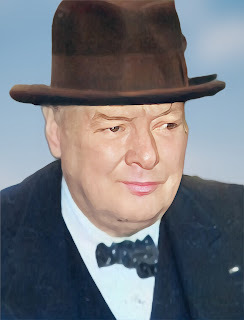 Nevertheless, even before the Potsdam Conference, Churchill’s common sense began to awaken as he started to realize that Stalin intended to keep every inch of European territory that the Red Army liberated from the Nazis. After Roosevelt’s death, Truman was less taken with “Uncle Joe,” but he was still learning the ropes when Potsdam met outside defeated Berlin, and the powers agreed on the division of their “zones of occupation” and the timelines for yielding to popular governments freely, fairly, and (of course!) “democratically” elected. Stalin was experienced in the art of rigging elections and/or ensuring that any opposition “disappeared” before having a chance to actually oppose his hand-picked people.
Nevertheless, even before the Potsdam Conference, Churchill’s common sense began to awaken as he started to realize that Stalin intended to keep every inch of European territory that the Red Army liberated from the Nazis. After Roosevelt’s death, Truman was less taken with “Uncle Joe,” but he was still learning the ropes when Potsdam met outside defeated Berlin, and the powers agreed on the division of their “zones of occupation” and the timelines for yielding to popular governments freely, fairly, and (of course!) “democratically” elected. Stalin was experienced in the art of rigging elections and/or ensuring that any opposition “disappeared” before having a chance to actually oppose his hand-picked people.The war in Asia, however, continued. Stalin promised his allies that he would “help them” defeat Japan as soon as the U.S.S.R.-Japanese non-aggression pact expired on August 9. The “help” was already on the move, with Marshall Zukov and 1.5 million Red Army soldiers crossing Asia on the Trans-Siberian railroad, headed for the Manchurian border. Stalin instructed them to “liberate” as much territory as possible. We’ll never know how the atomic bombing might have played out, had it not been for the Soviet Union’s Asian plan. As it was, Hiroshima was reduced to radioactive ashes on August 6th. The Japanese were warned that there would be another attack if they did not surrender unconditionally.
Strangely, the Japanese Imperial council did meet to consider surrendering to the Americans. However, the meeting took place not immediately after Hiroshima, but in the early morning hours of August 9, 1945. What caused this meeting was news that caught Japan completely off guard: at 12:01 AM on August 9, a million and a half Soviet troops poured over the border of Japanese-occupied Manchuria. Japanese forces were almost entirely engaged with preparing for an American invasion. Suddenly, the hated Soviet Communists were invading with a huge force from behind, facing virtually no opposition. Later that morning, while they deliberated, they received news of the second atomic bombing of Nagasaki. The rapidly advancing Red Army was, no doubt, also informed.
As Stalin’s invasion swept into Korea, the Americans scrambled to draw new lines for occupation of the Pacific theater. The 38th parallel jumped out from a hastily procured National Geographic map as dividing the Korean Peninsula, and the Americans got Stalin to agree to it as a demarcation line. This border would eventually cause another war, and is substantially still in place today. It is one of the most highly guarded places on earth, still dividing North Korea from South Korea.
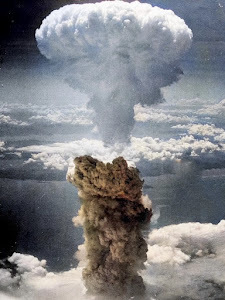 The August 1945 Soviet invasion of Japanese-controlled East Asia lasted only a week, but it was an immense success. They established Kim il-Sung and his communist partisans in North Korea (where the Kim “dynasty” remains in power to this day). And although the Soviets had little interest in occupying northeastern China for long, their conquest there provided expanded space and much needed captured weapons for the Chinese Communists, who renewed and eventually won the civil war against Chiang Kaishek’s nationalists. The hoped-for Chinese ally in the United Nations was replaced by the paranoid, unhinged dystopia of Mao Zedong.
The August 1945 Soviet invasion of Japanese-controlled East Asia lasted only a week, but it was an immense success. They established Kim il-Sung and his communist partisans in North Korea (where the Kim “dynasty” remains in power to this day). And although the Soviets had little interest in occupying northeastern China for long, their conquest there provided expanded space and much needed captured weapons for the Chinese Communists, who renewed and eventually won the civil war against Chiang Kaishek’s nationalists. The hoped-for Chinese ally in the United Nations was replaced by the paranoid, unhinged dystopia of Mao Zedong.By March of 1946, it was already clear to Winston Churchill that the peacetime United Nations were not really united (and that the great alliance of “united nations” that won the war had perhaps never really been united either). On March 5, he made a famous speech at Fulton University in Missouri, where he spoke frankly about the dangerous new circumstances of post-war Europe and the treachery of Stalin:
“From Stettin in the Baltic to Trieste in the Adriatic, an iron curtain has descended across the Continent. Behind that line lie all the capitals of the ancient states of Central and Eastern Europe. Warsaw, Berlin, Prague, Vienna, Budapest, Belgrade, Bucharest and Sofia, all these famous cities and the populations around them lie in what I must call the Soviet sphere, and all are subject in one form or another, not only to Soviet influence but to a very high and, in many cases, increasing measure of control from Moscow.”
The Security Council of the United Nations was also divided, with the Soviet Union as one of its five permanent members and capable of vetoing any proposal that did not serve Soviet interests. Instead of the security that everyone hoped would be the fruit of what had seemed like a great collaboration of nations in the common task of defeating Hitler’s brutal tyranny, the post-war world discovered that—for many nations—the result was only the exchange of one totalitarian state for another. The Cold War was already setting in, as the onetime allies now stood in opposition to one another. There was little that the newly founded U.N. could do to fix this crack in the foundation of its edifice.
Of course, Stalin and his successors ultimately “lost” the Cold War. Would this lead to a renewal of the United Nations and its ideals?
By the time the Soviet Union fell in 1991, political leaders had become accustomed to setting aside the urgent necessity for a true and secure peace in a world where many nations hoarded vast arsenals of weapons of mass destruction. Instead they turned once again to the logic of power and domination, hoping to build a “new world order” of international consumerism—the globalization of rampant ambition, cupidity, and the continual stimulation of novel, artificial, insatiable urges for unnecessary products that were sold, bought, used, and thrown away. In their rage of desires, humans continued to pillage the earth, its resources, and its delicate ecosystem that had been entrusted to human stewardship. The even-more-delicate and intimate realm of the human ecosystem—where human life itself is given and received—was invaded from every direction, in search of technological control, potential for profit, and false “freedom” that reduced new human persons to commodities to be produced on demand and/or thrown away as inconvenient. Starting with the “original home” of the human person, homes everywhere were torn apart. Love grew cold. People knew not where they belonged, or if anyone cared for them. Many hearts were plunged into profound loneliness.
Money became the new ruling power (well, not new, really…but on massive scale never seen before). Rich nations looked for new ways to enrich themselves and poor nations scrambled for pieces of this seemingly ever-expanding pie. Global affairs had become habituated to the ways of power politics. At the same time, new ideologies were brewing and old dreams of legendary powers were waking up. The years after the fall of the Soviet Union did not bring forth anything close to a world of “united nations.” A great deal of good has been accomplished, but much may be spoiled or wasted if we continue to choose conflict over collaboration. People long for unity today, but to all appearances the world in which they live remains divided and broken.
We must move beyond the inadequate dreams and aspirations and myths of the second half of the twentieth century. We are far from “the end of history.” We have scarcely begun to grapple with the real challenges of this new epoch—this unmoored, immensely powerful, strange, fascinating, and dangerous globally interconnected world that we will hand on to our children and grandchildren. They ask us for bread. Can we at least give them something better than stones?
March 8, 2023
Celebrating Eileen Janaro’s Birthday🙂❤️
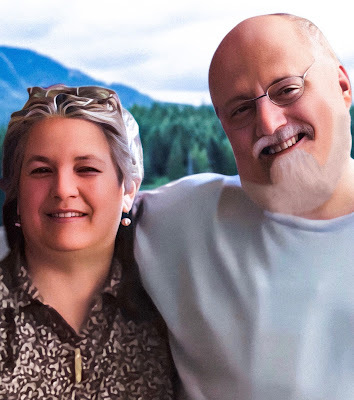 On Sunday, March 5, we celebrated my beloved wife Eileen Janaro’s birthday. “How old is she now?”—you ask? Well, she just turned [⚠️❌😳
Cough! Cough! Cough! ahem, hurrrmph, ack!
😳🫢🤫 ❌⚠️⚠️🙃] years old…
On Sunday, March 5, we celebrated my beloved wife Eileen Janaro’s birthday. “How old is she now?”—you ask? Well, she just turned [⚠️❌😳
Cough! Cough! Cough! ahem, hurrrmph, ack!
😳🫢🤫 ❌⚠️⚠️🙃] years old… I would never tell, haha. (Can you see the silly emojis on the device you’re using to read this?) All I’ll say is that she is younger than me!😉
I’m so glad her birthday fell on a Sunday this year. Eileen’s birthday is almost always during Lent (it fell on Ash Wednesday in 2014, but it also fell on Mardi Gras in 2019). Lenten weekdays put a bit of a damper on the celebration, with the result that it usually gets “moved” to the nearest Sunday anyway. In 2023, however, this shift was unnecessary.
Our observance of the Lord’s Day has taken on new characteristics in the past couple of years. We go to Mass with Josefina, our 16-year-old and the last of the kids who still lives “under our parental care” (Teresa, in university, still resides at the house, but she keeps her own hours and lifestyle, and usually goes to Mass at college). Often we meet John Paul, Emily, and Maria at the church, and sit with them… at least until Maria gets fussy and needs to be taken to the back. Ah, the “fun” of babies in church. How well we remember Masses in the “cry room” with Maria’s father, not so long ago, it seems…
On Sunday afternoons, we have an informal, no-pressure, come-if-you-can “family gathering.” Uncle Walter has been coming over on Sunday afternoons for many years, ever since the days when all five kids could fit in a large box. Now it’s a chance for all the adult children who live nearby to come visit, with some staying for dinner. Lucia and Mike live in New Jersey, but sometimes we call or “FaceTime” with them. So it’s almost like having a little “party” on Sunday. Generally the party starts when the younger “Janaro Family” arrives in early afternoon, after Maria’s nap, and it raps up around 7pm, Maria’s bedtime. Clearly the Main Attraction on Sunday afternoons is Her Majesty Maria the granddaughter and niece. She has been learning so much lately. At 20 months old, she’s moving beyond the “baby” stage and on to full fledged toddlerhood.
Maria makes our hearts feel young in new ways. We also enjoy our kids’ company, and are grateful that we can still see them frequently. Circumstances change all the time, of course, so we don’t take these days “for granted” but rather “with gratitude.”
 Last Sunday was especially special, as Eileen received lots of love from the people who are dearest to her. Her son cooked the dinner (which was really delicious—he didn’t learn cooking from me). And Agnese baked one of her famous birthday cakes. I gave Eileen a necklace and a couple of Van Gogh printed scarves (which I knew she would love).
Last Sunday was especially special, as Eileen received lots of love from the people who are dearest to her. Her son cooked the dinner (which was really delicious—he didn’t learn cooking from me). And Agnese baked one of her famous birthday cakes. I gave Eileen a necklace and a couple of Van Gogh printed scarves (which I knew she would love).Eileen and I have lived many years together and celebrated many birthdays. Now, in our 27th year of marriage, when I say, “I love you” to her, I’m expressing a love that encompasses so much common life, so many common experiences. Many moments have been hard, very hard, having to go through things we never could have imagined. But we have also had beautiful times, crazy times, fun times. It has all been good, because it is a path that leads to the Good and is suffused with the beginnings of the fulfillment we seek, for which we have been made, for which we live in hope.
We pray together every day, and Jesus keeps a hold of our lives and journeys together with us. Even through so many changes in life, through illness and limitations, through our differences in personality and temperament (which, really, help us to grow), through suffering losses of our precious elders, through times that seem overwhelming and paralyzing, Jesus stays with us. He never abandons us.
I love you, Eileen Janaro.❤️ Happy Birthday/BirthWEEK!💝
March 6, 2023
When Did “The United Nations” Begin?
 Twentieth Century global conflicts set the stage for the world we live in today, and the problems we face.
Twentieth Century global conflicts set the stage for the world we live in today, and the problems we face.In the latter part of World War II, the nations around the world (and their soon-to-be-independent colonies) who were united in the fight against Hitler and militant Japan began to refer to their global alliance as “the United Nations.” The leading allies were Great Britain, the (eventually-fully-restored) "Free French," the United States of America, China (under the decidedly anti-Communist Chiang Kai-Shek), and the Soviet Union. The War was so desperate that few considered the implications of the fact that the Soviet Union was still held ideological prisoner by the Bolshevik Communist revolution, which at that time meant that it was also the personal fiefdom of the murderous, genocidal Joseph Stalin (who was presented in affectionate terms as "Uncle Joe" during the war).
It was American President Franklin Delano Roosevelt who envisioned this vast and unprecedented alliance continuing after the war and opening itself up to all the nations of the world, as a institution to preserve peace, to moderate disputes, to collaborate in global activities to the benefit of all, and to deliberate about what was necessary for the security of nations and peoples. Thus, The United Nations as we know it today emerged from World War II.
Nearly 80 years later, it can be said that the U.N. has accomplished some good things, but overall the work of the U.N. has been a mixed bag, for many reasons. In particular, there is one structural problem that hobbles the U.N. to this day, and that is the nature and structure of the Security Council. In retrospect, it’s almost incredible to look back at the naive idealism of so many Westerners as the wars with Germany and Japan drew to a close in 1945.
The plan was that the “Big Five” allies in the wars would form the basis of the Security Council that would keep the peace, rein in offending nations, and authorize U.N. sponsored military interventions by member states if necessary. Other nations would also serve limited terms as Security Council members on a rotating basis. But the USA, Britain, France, China, and the Soviet Union would be permanent members, and each would have veto power over any proposal made (even if everyone else on the Security Council favored it). When the U.N. Charter was drawn up in 1945, it appeared to be a peacetime continuation of the unity of the Powers that were working together on three fronts to win “the Good War” against the destructive Germans and Japanese.
In fact, reality was a lot more complicated. Roosevelt’s ill-considered demand for “unconditional surrender” compelled the Allies to conquer completely the offending nations, thus deflating the possibility of working with any internal resistance within Germany or Japan. It may be that there were no viable alternatives in the case of Nazi Germany. It’s still difficult to penetrate the internal politics of Imperial Japan at that strange time, except to say that there were diverse opinions, but these became irrelevant in the face of the prospect of total conquest and foreign occupation.
Granted, the militarist Japanese were unscrupulous aggressors who perpetrated war crimes, and their decisive and permanent defeat was necessary. How else could it have been accomplished? There was never an opportunity to explore options other than conquering the entire island nation. The project was so daunting that the Allies saw no hope other than to unleash the dogs of war on a scale never before seen in history. But indiscriminate aerial terror bombing of entire civilian populations, even when considered in this desperate context, cannot be justified. And the atomic bombings of Hiroshima and Nagasaki recklessly ushered in the era of nuclear war.
As I have said before, the USA is a good country. But when its political or military interests are “backed into a corner,” its leaders will turn to “consequentialist” moral reasoning. Doing evil for the sake of a (calculated) “greater good” is a perennial temptation of good people who possess great power. The world-situation we face today, however, suffers from “consequences” that no one could have calculated in 1945.
When the five great powers arranged their strategies to restore and sustain a peaceful world after winning the worst of wars, none of them could claim to be entirely free of guilt and compromise with evil. None of them were perfect. Some of them had more problems than they wished to reveal. But one of them was a snake.
It is no longer denied that Joseph Stalin was a historical monster who—if not equal to Hitler in every way—was certainly in the same league with him. But during World War II Stalin used a gruff charm-offensive to appeal to the idealism of Roosevelt and the vanity of Churchill, to convince them that he had changed, or at least that they could do business with him. The alliance that defeated Hitler and the Japanese had an irreparable flaw. It enabled the expansion of Stalin’s totalitarian violence and extended its life beyond the dictator himself.
 Nevertheless, even before the Potsdam Conference, Churchill’s common sense began to awaken as he started to realize that Stalin intended to keep every inch of European territory that the Red Army liberated from the Nazis. After Roosevelt’s death, Truman was less taken with “Uncle Joe,” but he was still learning the ropes when Potsdam met outside defeated Berlin, and the powers agreed on the division of their “zones of occupation” and the timelines for yielding to popular governments freely, fairly, and (of course!) “democratically” elected. Stalin was experienced in the art of rigging elections and/or ensuring that any opposition “disappeared” before having a chance to actually oppose his hand-picked people.
Nevertheless, even before the Potsdam Conference, Churchill’s common sense began to awaken as he started to realize that Stalin intended to keep every inch of European territory that the Red Army liberated from the Nazis. After Roosevelt’s death, Truman was less taken with “Uncle Joe,” but he was still learning the ropes when Potsdam met outside defeated Berlin, and the powers agreed on the division of their “zones of occupation” and the timelines for yielding to popular governments freely, fairly, and (of course!) “democratically” elected. Stalin was experienced in the art of rigging elections and/or ensuring that any opposition “disappeared” before having a chance to actually oppose his hand-picked people.The war in Asia, however, continued. Stalin promised his allies that he would “help them” defeat Japan as soon as the U.S.S.R.-Japanese non-aggression pact expired on August 9. The “help” was already on the move, with Marshall Zukov and 1.5 million Red Army soldiers crossing Asia on the Trans-Siberian railroad, headed for the Manchurian border. Stalin instructed them to “liberate” as much territory as possible. We’ll never know how the atomic bombing might have played out, had it not been for the Soviet Union’s Asian plan. As it was, Hiroshima was reduced to radioactive ashes on August 6th. The Japanese were warned that there would be another attack if they did not surrender unconditionally.
Strangely, the Japanese Imperial council did meet to consider surrendering to the Americans. However, the meeting took place not immediately after Hiroshima, but in the early morning hours of August 9, 1945. What caused this meeting was news that caught Japan completely off guard: at 12:01 AM on August 9, a million and a half Soviet troops poured over the border of Japanese-occupied Manchuria. Japanese forces were almost entirely engaged with preparing for an American invasion. Suddenly, the hated Soviet Communists were invading with a huge force from behind, facing virtually no opposition. Later that morning, while they deliberated, they received news of the second atomic bombing of Nagasaki. The rapidly advancing Red Army was, no doubt, also informed.
As Stalin’s invasion swept into Korea, the Americans scrambled to draw new lines for occupation of the Pacific theater. The 38th parallel jumped out from a hastily procured National Geographic map as dividing the Korean Peninsula, and the Americans got Stalin to agree to it as a demarcation line. This border would eventually cause another war, and is substantially still in place today. It is one of the most highly guarded places on earth, still dividing North Korea from South Korea.
 The August 1945 Soviet invasion of Japanese-controlled East Asia lasted only a week, but it was an immense success. They established Kim il-Sung and his communist partisans in North Korea (where the Kim “dynasty” remains in power to this day). And although the Soviets had little interest in occupying northeastern China for long, their conquest there provided expanded space and much needed captured weapons for the Chinese Communists, who renewed and eventually won the civil war against Chiang Kaishek’s nationalists. The hoped-for Chinese ally in the United Nations suddenly became the strange dystopia of Mao Zedong.
The August 1945 Soviet invasion of Japanese-controlled East Asia lasted only a week, but it was an immense success. They established Kim il-Sung and his communist partisans in North Korea (where the Kim “dynasty” remains in power to this day). And although the Soviets had little interest in occupying northeastern China for long, their conquest there provided expanded space and much needed captured weapons for the Chinese Communists, who renewed and eventually won the civil war against Chiang Kaishek’s nationalists. The hoped-for Chinese ally in the United Nations suddenly became the strange dystopia of Mao Zedong.By March of 1946, it was already clear to Winston Churchill that the peacetime United Nations were not really united (and that the great alliance of “united nations” that won the war had perhaps never really been united either). On March 5, he made a famous speech at Fulton University in Missouri, where he spoke frankly about the dangerous new circumstances of post-war Europe and the treachery of Stalin:
“From Stettin in the Baltic to Trieste in the Adriatic, an iron curtain has descended across the Continent. Behind that line lie all the capitals of the ancient states of Central and Eastern Europe. Warsaw, Berlin, Prague, Vienna, Budapest, Belgrade, Bucharest and Sofia, all these famous cities and the populations around them lie in what I must call the Soviet sphere, and all are subject in one form or another, not only to Soviet influence but to a very high and, in many cases, increasing measure of control from Moscow.”
The Security Council of the United Nations was also divided, with the Soviet Union as one of its five permanent members and capable of vetoing any proposal that did not serve Soviet interests. Instead of the security that everyone hoped would be the fruit of what had seemed like a great collaboration of nations in the common task of defeating Hitler’s brutal tyranny, the post-war world discovered that—for many nations—the result was only the exchange of one totalitarian state with another.
The Cold War was already setting in, as the onetime allies now stood in opposition to one another. By the time the Soviet Union fell in 1991, political leaders had become accustomed to setting aside the necessities of peace and grasping for power. Global affairs had become habituated to the ways of power politics. People longed for unity, but to all appearances the world they lived in (and that we live in today) remained divided and broken.
March 4, 2023
Scenes From Winter 2023
After a few words about art, here is some art! This is “digital art” that I have been working on at JJStudios lately. These have been seen elsewhere on social media already, but I thought it would be good to display them on the Blog before Spring gets here in two-and-a-half weeks.
We still haven’t had a decent snowfall this year… but March is full of surprises!








March 3, 2023
What is Artistic Creativity?
 Artistic creativity has always served “culture,” in both the higher and broader senses. It has formed human environments and shaped the atmosphere of human social interaction, without necessarily plunging deeply into the resonating core of human experience that is evidently common to all of us. Not all art has the fine balance, the perhaps enigmatic but ultimately perceivable and indeed luminous concretization of the most profoundly universal dimensions of beauty, which emerges in the artwork from one historical and cultural context but “speaks” to people of every time and place, to their basic humanity. These are the true “classics.” But art can’t succeed at all unless it attains something on some level—however humble—in the realm of beauty. What we call “fine art”—in the categorical sense of the term—is work that has as its primary and directive purpose the expression of beauty, as perceived by the creative intuition of the artist that shapes the work. The fine arts—whether they be painting, sculpture, music, or the crafting of other media—are undertaken, ultimately, for the expression and human contemplation of beauty.
Artistic creativity has always served “culture,” in both the higher and broader senses. It has formed human environments and shaped the atmosphere of human social interaction, without necessarily plunging deeply into the resonating core of human experience that is evidently common to all of us. Not all art has the fine balance, the perhaps enigmatic but ultimately perceivable and indeed luminous concretization of the most profoundly universal dimensions of beauty, which emerges in the artwork from one historical and cultural context but “speaks” to people of every time and place, to their basic humanity. These are the true “classics.” But art can’t succeed at all unless it attains something on some level—however humble—in the realm of beauty. What we call “fine art”—in the categorical sense of the term—is work that has as its primary and directive purpose the expression of beauty, as perceived by the creative intuition of the artist that shapes the work. The fine arts—whether they be painting, sculpture, music, or the crafting of other media—are undertaken, ultimately, for the expression and human contemplation of beauty. There is a certain sense in which the artist creates first of all for his or herself, to achieve and then to contemplate the realization of his or her own creative intuition. This is what common language is trying to get at when it speaks of the "inspiration" of the artist, and it accounts for certain characteristics of some creative people, such as their need for solitude, their restlessness, their "dry spells," their intensity, their perfectionism, their continual reconfiguration of the same theme in many works, and—often—their overwhelming experience of frustration when others misunderstand or distort the significance of their work.
It's worth noting also that many artists have a natural disinterestedness in whether or not their work is "popular" (ego often enters subsequently, especially in the wake of success, but it complicates their creativity). Creativity is a way of being, of knowing, of loving, and of shining or resonating that fundamental ecstasy that every being possesses and communicates originally through the sheer wonder-fulness of its existing. "Beauty" (like "Truth" and "Goodness") is a "transcendental," a property that every being possesses in its own way, insofar as it is. We speak of the "greater" and the "lesser" regarding the whole realm of beings, so it stands to reason that there are also "greater" and "lesser" manifestations of beauty. But beauty (like being itself) is also predicated by analogy, and is therefore proper (in its own unrepeatable distinctiveness) to every particular existent. As Thérèse of Lisieux recognized so well, a garden has many different kinds of flowers, and the great roses have their beauty but the “little flowers” have their beauty too. The “levels" of beauty represent a harmonious pluralism, not a competition where one thing is exalted while another is held in contempt. The universe of being is a universe of beauty.
Correspondingly, every person is in some sense an artist. Every person is creative, just as every person is intelligent and free. Some, however, have more intensive dispositions and talents that lead them to take up artistic expression as their life's work, their "vocation."
…to be continued…




